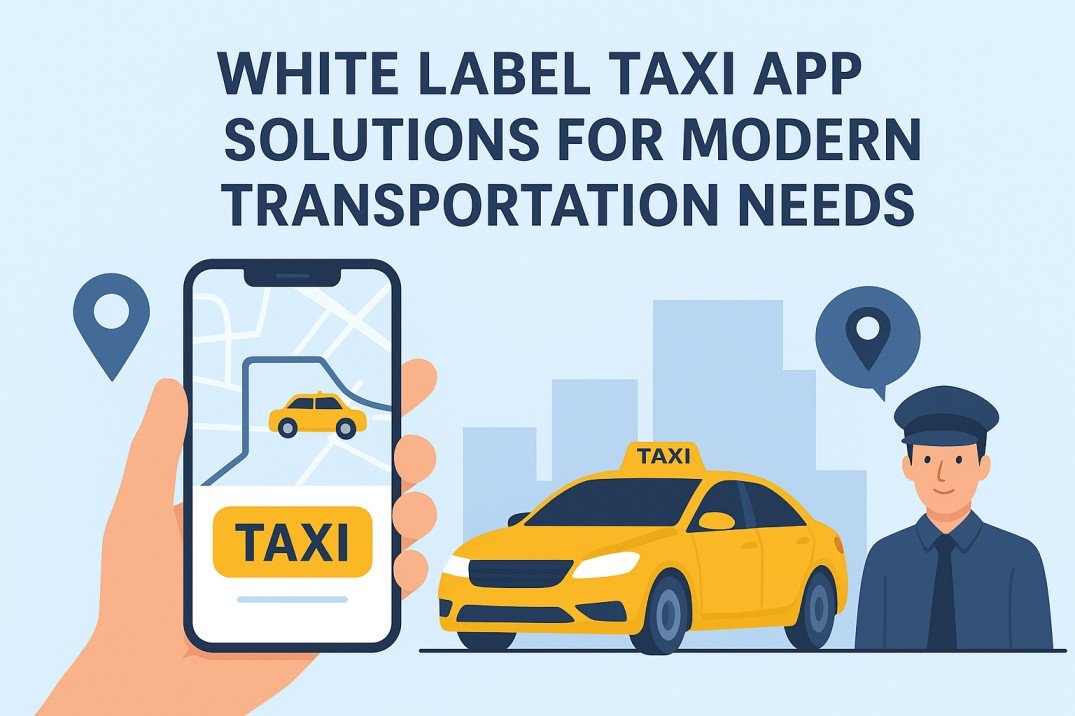The landscape of modern transportation has evolved rapidly over the last decade. Traditional methods of hailing a taxi on the street have given way to app-based solutions that provide convenience, transparency, and safety. White Label Taxi App solutions have emerged as a cost-effective and efficient way for entrepreneurs, fleet operators, and transportation businesses to establish their presence in this competitive sector. These applications are pre-built platforms designed for rebranding, customization, and deployment under a business’s own name.
With growing urbanization, increased smartphone penetration, and rising demand for on-demand mobility, taxi businesses require agile solutions. White label applications provide this flexibility while reducing time-to-market. This blog explores in depth the advantages, features, costs, and technological statistics that define the adoption of these solutions in the global transportation ecosystem.
Rising demand for digital transformation in taxi services
Globally, the online ride-hailing and taxi market is expanding at a remarkable pace. According to Statista, the global ride-hailing segment is projected to reach more than 390 billion US dollars in revenue by 2028, growing at a compound annual growth rate of around 6 percent. This growth is attributed to factors such as urban congestion, environmental concerns, and the preference for shared mobility options.
In many cities, over 60 percent of daily commuters use app-based transportation services at least once a week. The digital transformation of taxi services is no longer a luxury but a necessity. Operators who still rely on traditional dispatching methods risk losing their customer base to more agile and technologically advanced competitors. White label platforms allow businesses to remain competitive by deploying feature-rich apps that meet modern consumer expectations.
Key features of white label taxi apps for business success
White Label Taxi App solutions offer a wide range of features that make them attractive for businesses. Some of the most important include:
- Real-time ride booking: Customers can book rides instantly with GPS-enabled tracking.
- Driver and passenger apps: Separate interfaces ensure both drivers and passengers have tailored features.
- Automated fare calculation: Transparent pricing is provided through automated systems based on distance and time.
- Multiple payment gateways: Integration with credit cards, wallets, and local payment systems ensures seamless transactions.
- Admin dashboard: Businesses gain control with a central panel for monitoring rides, revenue, and performance.
- Analytics and reporting: Data-driven insights help operators optimize routes, manage peak demand, and improve customer satisfaction.
- Safety features: Options like SOS buttons, driver ratings, and trip-sharing enhance passenger trust.
According to industry surveys, more than 80 percent of passengers consider safety features as one of the most important aspects of a ride-hailing application. Hence, modern white label apps ensure these elements are part of the solution.
Technological foundation driving taxi app development innovation
The efficiency of taxi applications lies in the technologies powering them. White label apps are generally built on scalable frameworks that integrate cloud-based solutions, artificial intelligence, and real-time GPS systems.
- Cloud Infrastructure: Enables secure data storage and rapid scalability when user demand increases.
- Artificial Intelligence: Used for predictive demand mapping, route optimization, and driver allocation.
- Big Data Analytics: Helps businesses understand peak hours, user behavior, and pricing strategies.
- GPS and IoT: Provides accurate ride tracking, real-time navigation, and vehicle monitoring.
- Push Notifications: Keeps both drivers and passengers informed with alerts and updates.
According to recent statistics, more than 70 percent of leading taxi platforms now integrate machine learning algorithms to enhance customer experiences. With continuous innovation, white label taxi apps remain relevant and adaptable in a competitive market.
Business advantages of adopting white label taxi solutions
Businesses choosing White Label Solutions benefit from shorter development cycles and reduced costs compared to building a taxi platform from scratch. The main advantages include:
- Faster launch time: White label platforms can be deployed within weeks, allowing businesses to capture market demand quickly.
- Cost efficiency: Entrepreneurs save up to 60 percent of initial investment by choosing pre-built solutions.
- Brand ownership: While the core application is pre-built, businesses can customize the branding, features, and workflows.
- Scalability: The solution can grow with the business, supporting additional drivers, passengers, and new geographical markets.
- Compliance ready: Many platforms are designed to meet regional transportation regulations, making the approval process smoother.
For startups and small operators, the ability to launch with minimal risk while maintaining growth potential makes these apps a strong strategic investment.
Cost considerations and factors influencing taxi app solutions
When evaluating Taxi App Development Cost, several factors determine the overall investment:
- Features and functionality: Advanced features like AI-based matching or dynamic pricing increase costs.
- Platform choice: Developing for both iOS and Android simultaneously raises initial expenses.
- Customization requirements: The more branding and unique workflows required, the higher the customization cost.
- Geographic market: Costs vary depending on labor rates in development regions.
- Ongoing support: Businesses must also account for regular updates, maintenance, and server expenses.
On average, a mid-range white label taxi app package costs between 20,000 to 40,000 US dollars, while highly customized solutions may exceed 100,000 US dollars. Although the cost varies, the long-term return on investment is significant, with businesses often recovering their expenses within one to two years due to consistent ride demand.
Choosing the right partner for taxi app development services
To ensure successful deployment, businesses must carefully choose the right technology partner offering Mobile App Development Services. The ideal provider should have:
- Experience in ride-hailing platforms: Proven expertise reduces the risk of technical flaws.
- Strong portfolio: Past projects in transportation software reflect capability.
- Customization support: Ability to align with business goals and market needs.
- Technical support: 24×7 assistance ensures downtime is minimized.
- Security compliance: Proper encryption and secure payment handling are essential.
Working with the right provider ensures that businesses gain not just a functional taxi app but also a scalable platform capable of adapting to future technologies.
Future trends shaping the next generation of taxi applications
The future of taxi apps will be defined by several innovative trends. Businesses investing in White Label Taxi App solutions must prepare for:
- Integration with electric vehicles: As sustainability becomes a priority, apps will increasingly support EV fleets.
- Autonomous vehicle compatibility: While still emerging, apps will evolve to manage driverless ride allocation.
- Multi-modal transport integration: Platforms may include bikes, scooters, and public transport alongside taxis.
- AI-driven personalization: Apps will deliver customized ride offers based on user behavior.
- Blockchain adoption: Transparency in payments and contracts will improve through decentralized solutions.
According to forecasts, more than 25 percent of taxi app businesses will adopt electric vehicle integrations by 2030, and nearly half will use advanced AI models for predictive ride analytics. Businesses that adopt white label solutions today will have the foundation to incorporate these future technologies seamlessly.
Conclusion
White label taxi applications have become the backbone of modern mobility solutions. For entrepreneurs, startups, and established taxi businesses, they offer a cost-efficient way to adapt to changing transportation needs. With rapid deployment, scalability, and advanced features, these solutions ensure businesses remain competitive in an evolving market.
As global demand for ride-hailing continues to expand, businesses that embrace these solutions will not only reduce operational costs but also deliver safer, smarter, and more reliable services to their customers. White Label Taxi App platforms are not just a technological choice but a strategic investment for long-term growth in the modern transportation ecosystem.


